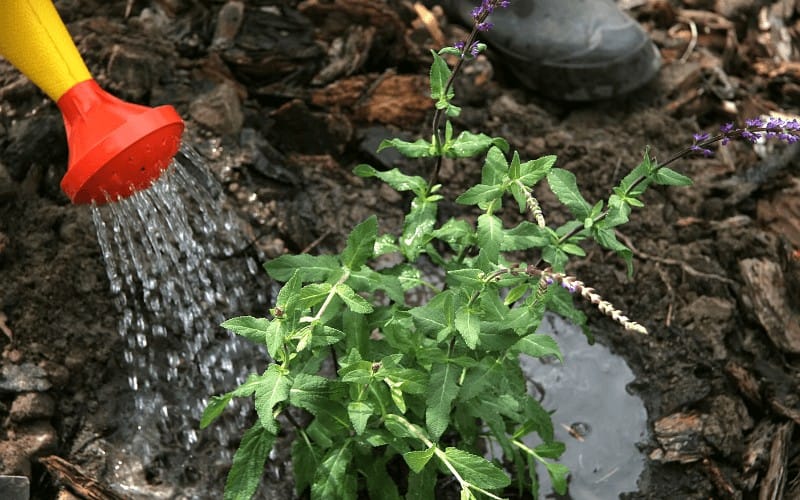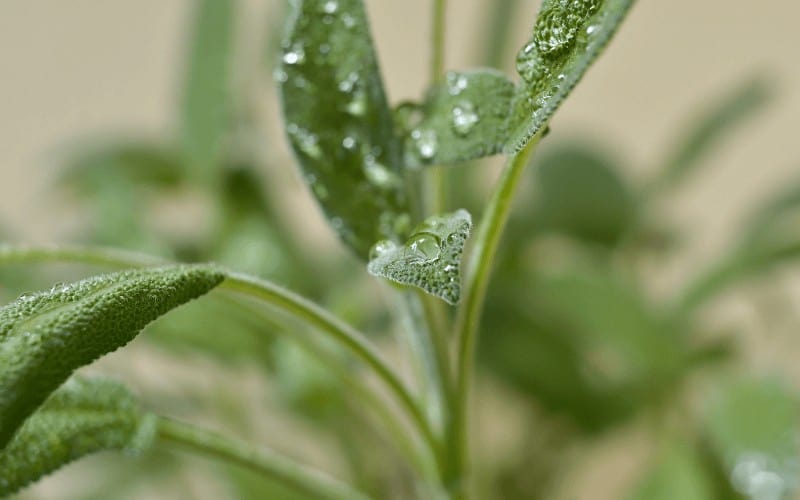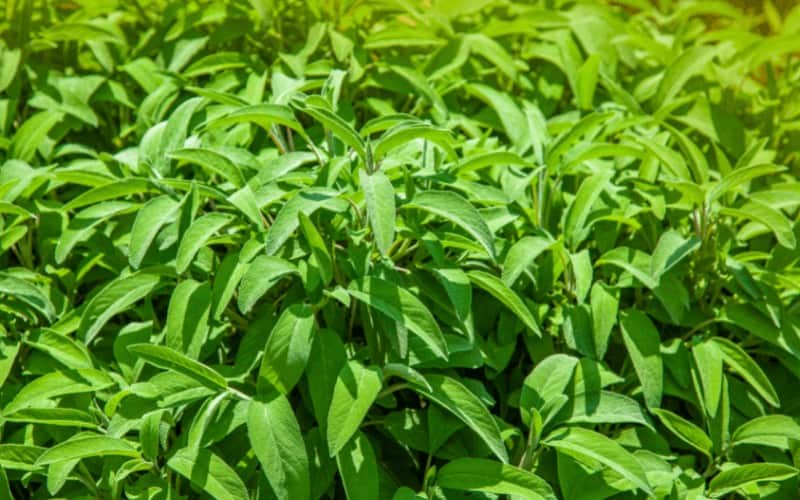Growing sage is economical and time-saving, and just like every other plant, a sage requires watering to keep the plant blooming. But how much water does sage need to flourish?
Water your sage plant once or twice per week for the first few weeks. The soil should be kept as moist as a possible. You can reduce the watering frequency to every week or two weeks when the plant has developed a solid root system.
Sage, otherwise known as a culinary herb, is a member of the mint family Lamiaceae.
The Sage herb is one of the easiest plants to grow even without prior gardening experience. Moreover, it possesses a pleasant scent, hence the additional name ‘aromatic herb’, so if you are a scent lover, you will definitely love this plant.
In this guide, we shall be discussing in details, the watering needs of sage plant, and how often to water sage plants.
Let's get started!
Table of Contents
Does Sage Like Lots of Water?

Probably you have your sage plant with you, or you intend to grow a sage plant. Now you wonder ‘how much water does sage need’?
Well, the amount of watering required by sage would depend on some factors, one of which includes the growth cycle.
Newly planted sage plants would require lots of water to grow for but the established plants would require less water.
You'll learn the watering process later on in this guide so, read on!
How Much Water Does Sage Need?
Like we mentioned earlier, we advise you water your sage plant once or twice per week for the first few weeks. It's important that the soil remains as moist as a possible.
You can lessen the watering frequency to every week or two when the plant has developed a solid root system.
That said, it is generally known that plants need water to grow. But then how much water does sage need depends on some factors.
Factors like:
- Growth cycle or age of the plant
- Conditions
- Temperature
- Existing moisture level
- Type of container
- Where it is planted
- Etc.
So, it is possible to give your sage plenty of water at some point and then withdraw after some time.
Let's look at these factors:
Factors Affecting How Much Water Sage Needs

1. Growth cycle: Stages range from new growth to fully established sage plant.
2. For newly grown sage: It would require lots of water. For the first few weeks, 3-4 weeks, you'll need to water the sage once or twice per week. After that, water the plant until it develops a good root system.
Now how to water establishing/established sage plant- at this point, your sage has probably found its footing and will only require watering every week or two.
So you decrease the watering process, and when it is fully established, you can withdraw completely, leaving it to dry out some water before watering thoroughly.
3. The location where the Sage is planted (outdoor or indoor): This is yet another factor.
4. Outdoor: Hotter gardens will require more frequent watering. For best results, water the plant when the topsoil feels dry.
5. Indoor: Just as the outdoor plant, you would need to water your sage plant when it feels dry at a touch.
The only difference is your outdoor plant would have the soil dry faster than the indoor sage plant, and so outdoor sage requires more watering than the indoor sage plant.
6. Temperature: Water more when the temperature is hot, decrease watering when the temperature is cold. The best temperature is 60-70°F.
Note: Sage is relatively hardy and can withstand frost when it is well established; however, avoid leaving the newly sage plant to frost.
7. Type of container and existing moisture level- A well-draining pot would not let water set in, and so it is preferable; it requires water regularly but doesn't overwater it.
Some other pots would require it to dry about 3 inches before watering since they don't have good drainage.
Ensure to check the current moisture level before watering your sage plant. You can feel with your hand or soil moisture meter.
When To Water Sage Plants?
Try watering your sage plant in the morning, so it carries the plant the whole day. On the other hand, your sage plant might not need watering in the evening because the nights are colder even till the early morning.
However, if you must water in the evening, make sure the soil is dry. Remember to water just a little so you don't have water sitting in the pot as swampy soil attracts destructive pests.
Other than these factors, you must be able to know whether your plant needs water or not before administering precautionary measures.
How to Know Your Sage Plant Needs Watering

If you haven't watered the plant for sometime, then it will start showing signs like:
- Yellowing and dry leaves towards the bottom of the plant.
- Wilting and falling leaves
- Droopy leaves
- Brown leaves
- New leaves begin to fall from the plants
All this is because the root is struggling to transport water through the stem and then the leaves. At this point, your plant needs watering ASAP to keep it from dying.
Note: Other factors can amount to your plant showing some of these signs, so be sure to know it is watering issues.
Can You Over Water Sage?
Yes, sage plant can be overwatered!
You must understand that sage is a drought-resistant herb and is very sensitive to excessive moisture around the roots. It's also worth noting that the most common cause of a sage plant wilting is overwatering.
That said, the best way to protect a sage plant from wilting, drooping, and dying as a sign of stress is to reintroduce some of the growing conditions of its native habitat.
How Can You Tell If Sage Is Overwatered?
There are several ways to tell if your sage plant is overwatered. Some of the most notable signs of overwatered sage plant are:
- Leaves suddenly turns dark or black in color
- The sage doesn’t appear to perk up when watered
- You notice a fuzzy mildew substance on the sage plant
- Safe leaves turn yellow and fall
- The sage is not growing (stunted growth)
- The stems and roots of the plant soften or break easily
- You notice signs of edema on the leaves
Other Watering Concerns Of Sage Plant
- The ideal water for sage is rainwater; however, if you must use tap water, make sure it is 'free' from chlorine. Leave it under the sun for 24 hours to evaporate
- Avoid plant shock by watering when the water is at room temperature
- Avoid watering the leaves; water only the soil and stems
- You can learn how to use a mulch to avoid overwatering
- To avoid insects like powdery mildew and other insects, use fungicides
- If you must prune, do so in the morning when the foliage is moist, cut dead branches in the center from ground level to allow your sage to grow well
Conclusion
This is all there is to learn about how much water your sage needs. You'll only need to refer back to this guide, so you water your sage plant adequately without regrets and equally get rewarding results!
It is essential to know that your plant would need all the care to grow, but remember not to give it too much, so it grows naturally and produces good aromatic herbs.
This guide has provided you with helpful information on how best to water sage at different levels.
Hopefully, you have an excellent time watering your sage plant!




